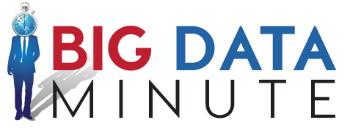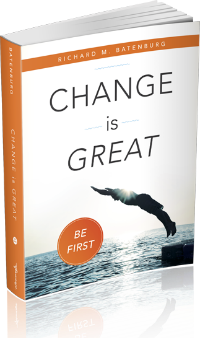
by Aleah Radovich | Mar 25, 2016 | Business Intelligence, Creating Competitive Advantage
89% of companies believe that if they do not develop and adopt a big data analytics strategy, that they could lose both market share and momentum.
Why? Because big data tells you things about the world, and about your business that you didn’t know before. And as more and more of your competitors adopt data strategies, they will learn more and more about your industry, putting you at a disadvantage. It is quickly becoming the “new thing” in business.
Luckily, it is quickly becoming easier and easier to adopt a big data strategy.
Step 1: What is Big Data?
The first step is to learn what Big Data really is. Understand it first, in order to appreciate its value to your company.
Step 2: Get Comfortable With the Idea of Using Big Data
The definition may scare you, because it is a little mind-boggling and difficult to comprehend. However, it is not as big and scary as it seems. It is also not as costly as it seems. The Internet of Things (IoT) movement is making collection much easier, and the cloud is making storage much easier. Even analytics are becoming easier for companies of all sizes. If you don’t have enough money to spend on hiring a whole team of data analysts and data scientists, don’t sweat! There are firms out there that specialize in this that can analyze your data for a much lower cost than hiring a team.
Step 3: Ask Yourself These Questions to Develop a “Big Data Plan”
A good first question to ask yourself is, “what do we have?” Then identify what kind of data you think you are missing that you may need. This will help you identify what kind of data to collect. Many companies think that simply collecting a lot of data is a “data strategy.” However, data is only useful if it is relevant to your company. Furthermore, collecting a lot of data can make it more difficult for a data analyst to extract information and insight from that data. Having a lot of data makes the analyzing process more difficult, as they have to sift through all of the irrelevant information (and initially decide what information is irrelevant in the first place).
Next ask, “What assumptions do I have about my company?” This is a great question to ask, as it is a great starting point for companies that don’t have a big data analytics plan already in place. At this point, much of what you know (or rather, think you know) about your company are based on assumptions. You may have reports that tell you things, but this data can be manipulated and often comes from many, disparate sources. Because of this, you may not be getting accurate information.
Therefore, a good starting point is to test your hypothesis about your assumptions of your company. This also makes it easier for a data scientist to determine where to start…and you never know, along the way, he or she may find something else that will be useful.

by Stephanie Rabinowotz | Feb 3, 2016 | Big Data, Creating Competitive Advantage
It is that time again where there are relentless adds, phone calls and commercials about the presidential campaign. The reason for this? You cannot win a presidency if no one knows who you are. For years this has been the method of gaining recognition in almost any campaign, so how can one candidate get ahead? Big Data.
Everyone else is using Big Data to gain competitive advantage so why shouldn’t presidential candidates? Well that is exactly what presidential candidate, Ted Cruz thought before implementing Big Data into his campaign. I don’t have a stance on who the next president should be, but I do know that Big Data is aiding Cruz’s campaign greatly.
Big Data has been shown to help candidates be more effective by gaining insights into voter preferences. Some people prefer to learn about candidates via phone call, while others may enjoy advertisements by mail. Big Data can show which people are more likely to respond better to different methods. With this sort of insight, candidates can make better decisions and save a lot more money by strategically promoting themselves.
To learn how else Big Data is being used in interesting, different ways check out this interesting, different article!

by Stephanie Rabinowotz | Dec 14, 2015 | Big Data
With all of the holiday parties bursting to life this time of your, I thought it would be appropriate to put Big Data in terms that can be related to every day life.
Imagine you are new to a company, competing with the other intern they hired the same time as you for the next opportunity to move up in the company. You attend the company holiday party, dressed to the nines to make the right impression. You are charming and interesting, but you cannot seem to remember half the names of the executives you are chatting up. Your boss asks you about the latest developments in the major project the company is working on and you can’t give him an up to date answer.
Meanwhile, the other intern is connecting with all of the execs because he knows what to talk about and with who to talk. He has done his research and not only knows the names of all of the people he is talking to, but their spouses as well. You over hear him talking about the latest predictions about the company’s big project based on the analytics he has been running, and you think to yourself, “That’s it, I’m done for”.
This is what it feels like between companies who use Big Data and those who don’t. Obviously the intern using Big Data is going to be the top candidate for the open position in the company all because he relied on the objective data to give him accurate information. Companies can put on a pretty face, charm you and try to pretend that they know what they are talking about, but ultimately that will all come back to haunt them. Big Data is information and information is your biggest asset. Having the more current, accurate information is what is going to make companies money and ensure success, not a sharp looking suit.
See how Big Data can change your company into the business people can trust and rely on. Check out Cliintel for more information.

by Stephanie Rabinowotz | Dec 2, 2015 | Creating Competitive Advantage, Customer Satisfaction
The majority of adults indulge in the occasional glass of wine or beer, some more than others, but never the less liquor is a consistently successful industry. The issue is that there are so many players in the field that competition is constantly on the rise. With a continual stream of new products being released how can businesses set themselves apart to gain a competitive edge? How can businesses get more accurate and up to date feedback from their consumers?
When Big Data is used as an analytics tool it has proven to provide invaluable results. There is such a wide demographic of alcohol consumers that it becomes difficult to track consumer trends and acquire better marketing techniques. Big Data analytics can dig out the patterns in consumer trends and give the manufacturer feedback on where they need to improve to be more successful.
This insightful podcast reveals some great advice for beer and liquor vendors through using Big Data as a tool to better manage development as well as customer satisfaction!
Check out this podcast and learn how liquor vendors and manufacturers can take the lead against competition and up their annual sales!

by Bill Decker | Aug 5, 2015 | Case Studies, Creating Competitive Advantage
Process Redesign and Software Enhancements Reduces Operating Expenses
Customer service is critical for the success of most companies. But it comes at a cost. For a leading provider of industrial-strength hardware, software and services this cost had become inordinately high due to a business decision to “give service” or support to customers regardless of entitlement. Cliintel was asked to assess the situation, create new processes to correct the problems in the software which had been developed for the European/Middle East and Asian (EMEA) markets, and then to oversee its deployment in the Americas.
The Client:
The Client is a leading provider of industrial-strength hardware, software and services that power the internet with installations in more than 100 countries.
The Business Issue:
The client had reached an impassable situation. During a period of quick expansion, both the database available to the call center representatives and the tools needed to verify customer entitlement for services contained significant inaccuracies. In an attempt to address these issues, the client created a policy of providing unnecessary service to assuage customers and attempt to maintain customer retention. The customers soon became accustomed to contacting the call center and simply demanding service which often resulted in a technician being dispatched to their location to resolve issues. This practice was barely maintaining customer satisfaction levels, but was creating unnecessary costs in excess of $4 million per quarter.
The company needed a solution to the systemic problems of inaccurate customer information. In other words, the client needed a tool that would quickly and accurately determine the entitlement status for any given customer 24×7, 365 days a year as well as provide an action plan for correcting, uplifting or abandoning customers who were out of their warrantee or support period.
The project was completed under budget, within the 45 day schedule, with the client realizing a savings of $4 million in the 1st quarter, eliminating the unnecessary costs previously being incurred.
The Challenge:
The client database mining algorithm had been developed in the EMEA markets for the purpose of handling such a problem. The challenge was to deploy this tool in the Americas, where the customer base was 25 times the size of the EMEA markets currently using the tool, with a deadline looming in 45 days.
The Solution:
The solution was to gather stakeholders, agree upon a level of service and negotiate with the Sales and Service Delivery organizations on an acceptable response time for corrective action. Then they could proceed to development to rapidly enhance the EMEA product for the Americas and deploy it in 45 days.
Due to the incredibly short deadline Cliintel employed a strategy to break down the processes into manageable units. A Rational Unified Process (RUP) model was used to complete the development of the enhanced software, followed by a Change Acceptance Process (CAP) developed with the stakeholders to ensure a smooth and efficient transition to deployment.
The Project Results:
The project was completed under budget, within the 45 day schedule, with the client realizing a savings of $4 million in the 1st quarter, eliminating the unnecessary costs previously being incurred.
We’re proud to help our clients solve tough problems and achieve stunning results. To see what kind of results Cliintel can deliver for you, please visit www.cliintel.com or e-mail askcliintel@cliintel.com.











Recent Comments